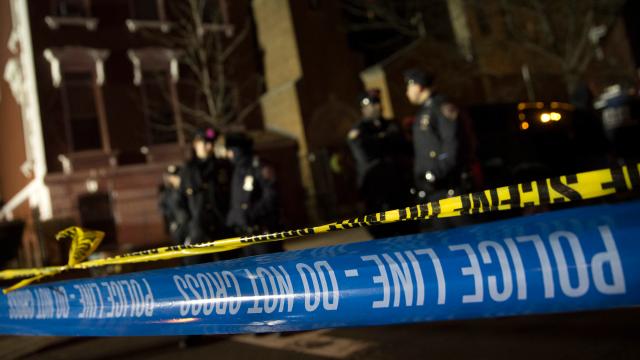The New York City Police Department has developed a pattern-recognition tool called Patternizr to sort through mountains of files related to “hundreds of thousands of crimes logged in the NYPD’s database,” the Associated Press reported on Sunday.
According to the AP, the NYPD says the tool can help analysts working for the department suss out potential links between different crimes, sometimes far across the city and thus unlikely to have been spotted via manual methods. While the tool — created by NYPD assistant commissioner of data analytics Evan Levine and former director of analytics Alex Chohlas-Wood—has been in use since 2016, the department only acknowledged its use this month.
The AP wrote:
The department disclosed its use of the technology only this month, with Levine and Chohlas-Wood detailing their work in the INFORMS Journal on Applied Analytics in an article alerting other departments how they could create similar software. Speaking about it with the news media for the first time, they told The Associated Press recently that theirs is the first police department in the country to use a pattern-recognition tool like this.
“The goal of Patternizr is, of course, to improve public safety,” said Levine, an astrophysicist by academic training. “The more easily that we can identify patterns in those crimes, the more quickly we can identify and apprehend perpetrators.”
The AP added that NYPD testing based on a decade’s worth of manually identified crime patterns “accurately re-created old crime patterns one-third of the time and returned parts of patterns 80 per cent of the time.” The point isn’t to finger perpetrators directly, but cut down on the number of possible leads investigators can pursue. One example provided by the department to the AP was that of a “syringe-wielding drill thief” who robbed two separate Home Depots in the Bronx and Manhattan—incidents which analysts in separate precincts may have never compared directly.
The NYPD has increasingly rolled out a number of high-tech systems, including a fleet of drones for “tactical operations,” a deafening sound cannon it claimed was an “effective and safe communication tool,” and vehicles disguised as taxi cabs that are allegedly loaded with state-of-the-art surveillance gear.
It also has a controversial “Forensic Imaging System,” a system that integrates biometrics into searchable databases from people taken into custody and which has been hotly contested on the grounds that it lacks transparency.
The NYPD has long had a contentious relationship with civil rights organisations that argue it has been resistant to reform, shuts down investigations of alleged misconduct, and tries to suppress what information it hands over about its practices. Any expansion of their toolset, especially those that could be influenced by bias, is thus likely to be met with raised eyebrows from privacy and civil liberties advocates.
According to the AP, the NYPD says the Patternizr tool does not include data on the race of suspects as part of an effort to reduce possible biases.
Christopher Dunn, the legal director of the New York Civil Liberties Union, told the AP that the NYPD should allow independent assessments of Patternizr.
“To ensure fairness the NYPD should be transparent about the technologies it deploys and allows independent researchers to audit these systems before they are tested on New Yorkers,” Dunn wrote.
